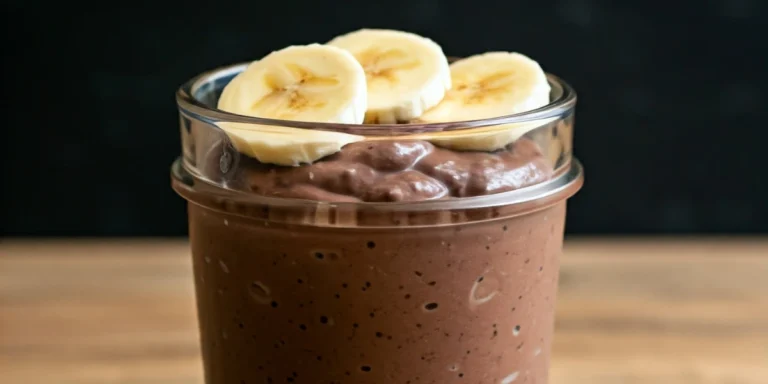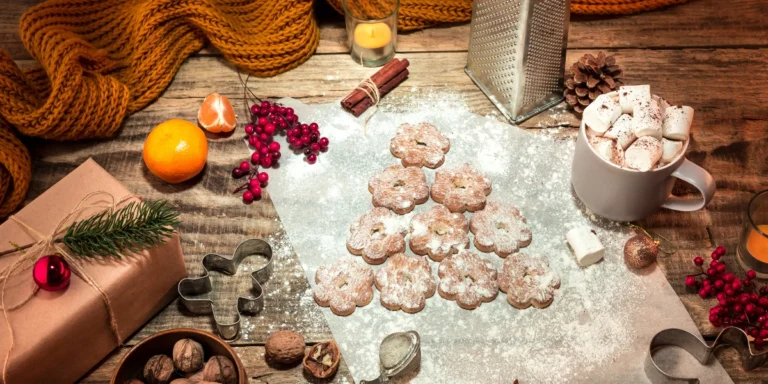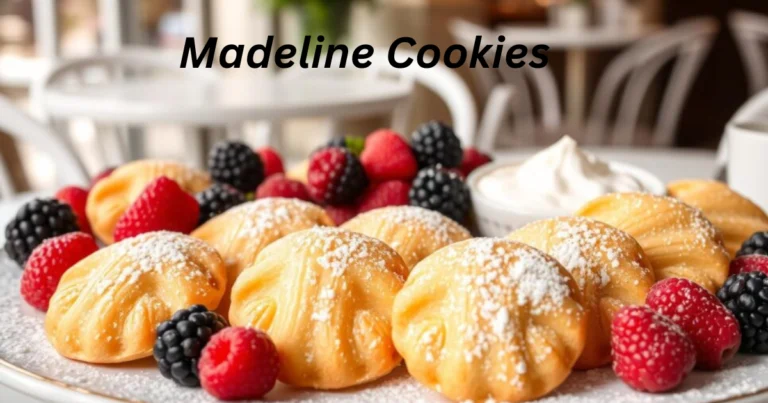How to Make Fondant Recipe – Easy DIY Instructions
Unlock your creativity in the kitchen with homemade fondant! This icing gives your cakes a smooth finish and endless decorating options. But, what makes fondant special? And can you make it like a pro at home?
Table of Contents

This guide will show you how to make fondant from scratch. It’s perfect for both experienced bakers and beginners. You’ll learn how to make fondant that’s as good as store-bought. We’ll cover everything from the types of fondant to kneading and coloring. Get ready to make cakes that wow your loved ones!
Key Takeaways
- Discover the benefits of using homemade fondant for your cakes and confections.
- Learn the various types of fondant and their unique properties.
- Uncover the essential ingredients and tools needed to make fondant from scratch.
- Explore step-by-step instructions for creating a perfect fondant recipe.
- Gain valuable tips for achieving the perfect fondant consistency and troubleshooting common issues.
Understanding Fondant: Types and Basic Ingredients
Fondant comes in several types, each with its own special qualities. You can choose from rolled fondant, poured fondant, and marshmallow fondant. Knowing the differences helps you get better at decorating cakes with fondant.
Different Types of Fondant Explained
- Rolled Fondant: This fondant is soft and easy to shape. It’s great for making cakes look smooth and for adding details.
- Poured Fondant: Thinner and more liquid, poured fondant is perfect for glazing and filling. It has a shiny finish.
- Marshmallow Fondant: Easy to make and use, marshmallow fondant is soft. It’s perfect for sculpting and modeling.
Essential Ingredients for Homemade Fondant
To make fondant at home, you need powdered sugar, gelatin, and glycerin. These ingredients make fondant smooth and pliable. They also help it last longer.
Tools and Equipment Needed
For homemade fondant, you’ll need a few tools. You’ll need a rolling pin, a fondant smoother, and corn starch to prevent sticking. With these tools, you can make cakes and decorations that look amazing and taste great.
How to Make Fondant Recipe: Step-by-Step Guide
Learning to make fondant at home is a fun and rewarding skill. It can take your baking to the next level. This guide will help you make a smooth, pliable homemade sugar paste for your cakes and treats.
Let’s start with the basics of marshmallow fondant tutorial. We’ll cover the essential steps to make your own tasty fondant from scratch:
- Gather and Measure the Ingredients: Get all the needed items like powdered sugar, light corn syrup, and water. Measure them carefully as the recipe calls for.
- Combine the Ingredients: Put the powdered sugar, corn syrup, and water in a big bowl. Mix until a dough starts to form.
- Knead the Fondant: Turn the dough onto a clean, lightly dusted area. Knead it for a few minutes until it’s smooth and soft.
- Wrap and Chill: Shape the fondant into a ball, wrap it in plastic wrap, and chill for at least 2 hours. This step makes the fondant perfect.
- Re-knead and Color (Optional): Take the fondant out of the fridge and knead it a bit. If you want, divide it and add food coloring for different colors.
Follow these easy steps to make your own fondant recipe. Remember, making fondant takes patience and care. Enjoy the process and don’t rush it.
“The key to perfect fondant is in the kneading – the more you work it, the smoother and more pliable it becomes.”
Preparing Your Workspace and Ingredients
Making fondant is more than just a recipe. You need a clean, organized space and accurate measurements. A clean workspace and precise measurements are key for success.
Proper Surface Preparation
Start by cleaning your work area well. Use a damp cloth to wipe down the counter or table. This removes crumbs, spills, and residue.
After drying, dust the surface with powdered sugar or cornstarch. This prevents the fondant from sticking.
Measuring and Organizing Components
Getting the measurements right is crucial for fondant. Use measuring cups and spoons to accurately measure each ingredient. Keep your ingredients organized and within reach for a smooth process.
Temperature and Humidity Considerations
The temperature and humidity in your workspace matter a lot. Aim for a cool, dry place. High temperatures and humidity can make the fondant sticky or hard to work with.
Use a dehumidifier or air conditioning to keep the ideal conditions for fondant preparation.
“Attention to detail is the key to successful fondant making. Take the time to set up a clean, organized workspace and measure your ingredients precisely.”
| Workspace Preparation Checklist | Ideal Conditions |
|---|---|
| Surface Cleaning | Thoroughly wiped down and dusted |
| Ingredient Measurement | Precise, using appropriate tools |
| Temperature and Humidity | Cool, dry environment |
Kneading and Coloring Techniques
Learning to knead fondant is key for a smooth, pliable texture. Dust your work area with powdered sugar or cornstarch to stop it from sticking. Use the heel of your hand to knead, folding the fondant to add air and make it silky. Don’t overwork it, or it will become stiff and brittle.
Gel colors are best for coloring fondant. They mix well without making the fondant too thin or changing its texture. Start with a little color and knead it in, adding more until you get the shade you want. For a marbled look, color different parts of the fondant, then fold them together gently.
| Coloring Technique | Advantages | Considerations |
|---|---|---|
| Fondant kneading | Achieves a smooth, pliable texture | Avoid overworking to prevent a stiff, brittle fondant |
| Gel food coloring | Concentrated pigments that blend well without thinning fondant | Start with small amounts and gradually increase color intensity |
| Marbling | Creates unique, eye-catching patterns | Requires careful handling to achieve the desired effect |
With practice in fondant kneading, food coloring, and marbling, you can make your cakes look amazing. Your creativity can turn cakes into stunning art pieces.

Tips for Achieving the Perfect Fondant Consistency
Getting the right fondant texture is a bit tricky. But, with the right methods, you can make it smooth and easy to work with. Here are some tips to fix common texture issues and keep your fondant in top shape, no matter the weather.
Common Texture Problems and Solutions
If your fondant feels dry and crumbly, it might not have enough moisture or you might have kneaded it too much. To fix this, add a little water or corn syrup and knead it gently until it’s smooth again. If your fondant is too sticky, it might have too much moisture. Add some powdered sugar or cornstarch to soak up the extra moisture and get the right texture.
Storage and Shelf Life Guidelines
Keeping your fondant in good shape starts with proper storage. Use an airtight container or wrap it tightly in plastic wrap to keep it from drying out. Fondant can last for weeks at room temperature when stored this way. For longer storage, refrigerate or freeze it to keep it fresh for months.
Working with Different Weather Conditions
Fondant can be tricky in different weather. In humid places, it gets sticky, and in dry areas, it dries out. To handle these issues, you might need to adjust your recipe or how you work with it. For example, add more powdered sugar or cornstarch in humid weather, and a bit of water or corn syrup in dry conditions to keep it just right.
“The key to troubleshooting fondant is understanding how temperature, humidity, and your ingredients work together to create the perfect consistency.”
Troubleshooting Common Fondant Issues
Working with fondant can be both exciting and challenging. You might face problems like cracks, tears, elephant skin, and air bubbles. But don’t worry, with the right techniques and patience, you can fix these issues and get perfect results.
Fixing Fondant Cracks and Tears
Fondant cracks and tears can be frustrating. But they’re often easy to fix. For small cracks, knead in some vegetable shortening or corn syrup to rehydrate and smooth the surface. For bigger tears, press the edges together and use a fondant smoother to blend the seam.
Working in a humid environment can help prevent fondant cracks. Or, mist your fondant lightly as needed.
Preventing Elephant Skin Texture
The “elephant skin” texture is a common problem. It happens when your workspace is too hot or dry. Fondant does best in cool, low-humidity places. If it’s too dry, knead in some vegetable shortening or corn syrup to rehydrate it.
Make sure your fondant is well-kneaded and free of air pockets. This helps avoid an uneven texture.
Dealing with Fondant Bubbles
Air bubbles in fondant can cause bumps and ruin the finish. To avoid them, knead your fondant well to remove air pockets. If bubbles do appear, use a toothpick or fondant smoother to gently pop them and smooth the surface.
Fixing fondant problems takes practice and patience. With time and effort, you’ll get better at solving any fondant challenge.
| Common Fondant Issue | Possible Causes | Solutions |
|---|---|---|
| Fondant Cracks | – Dry environment – Overworked fondant | – Add vegetable shortening or corn syrup – Increase humidity in workspace |
| Elephant Skin Texture | – Dry environment – Inadequate kneading | – Add vegetable shortening or corn syrup – Knead fondant thoroughly |
| Fondant Bubbles | – Air pockets in fondant | – Pop bubbles with a toothpick or smoother – Knead fondant thoroughly |

Creative Ways to Use Your Homemade Fondant
Homemade fondant opens up a world of creativity. It can turn simple baked goods into stunning works of art. From basic cake covering to intricate designs, fondant is incredibly versatile.
Basic Cake Covering Techniques
Covering cakes with fondant makes them look professional. Learning to drape and smooth fondant is key. It also lets you add more decorations, making your cakes truly special.
Decorative Elements and Shapes
Fondant is great for making fondant flowers, 3D fondant figures, and more. You can create everything from simple flowers to detailed figures. These decorations add a touch of magic to any dessert.
Advanced Design Applications
For those who love a challenge, fondant can create amazing 3D designs. By experimenting with layering and texture, you can make cakes look like masterpieces. It’s a way to turn simple treats into edible art.
“Fondant is the ultimate medium for unleashing your creativity in the kitchen. With a little practice, the possibilities are truly limitless.”
Whether you’re new to fondant or have experience, it’s a great way to express yourself in the kitchen. It can lead to endless creativity and joy in your baking.
Conclusion
Congratulations on mastering homemade fondant! We’ve covered types, ingredients, tools, and how to make it. Now, you can improve your cake decorating skills.
Making your own fondant has many benefits. You control the ingredients and texture. Plus, you get to enjoy making a versatile cake topping from scratch.
Keep practicing and having fun with fondant. Try new flavors, colors, and designs. With effort and a love for learning, your desserts will amaze everyone. Bon appétit!
FAQ
What is fondant?
Fondant is a smooth, pliable icing used for cakes. It can be shaped and textured, giving cakes a professional look.
What are the different types of fondant?
There are three main types: rolled, poured, and marshmallow fondant. Each has its own uses and qualities.
What are the essential ingredients for making homemade fondant?
Homemade fondant needs confectioners’ sugar, gelatin, and glycerin. These ingredients help achieve the right texture and consistency.
What tools and equipment are needed for making fondant?
You’ll need a rolling pin, fondant smoother, cornstarch, and a clean surface. These tools help knead and roll the dough.
How do I properly knead and color fondant?
Kneading fondant makes it smooth and pliable. You can also add color gels or pastes for custom shades and marbled effects.
How do I troubleshoot common fondant issues?
Fixing problems like cracking and air bubbles involves adjusting moisture and technique. Patience and practice are crucial.
What are some creative ways to use homemade fondant?
Fondant is great for basic cake covering and making decorations like flowers and figures. Its versatility opens up endless creative options.







